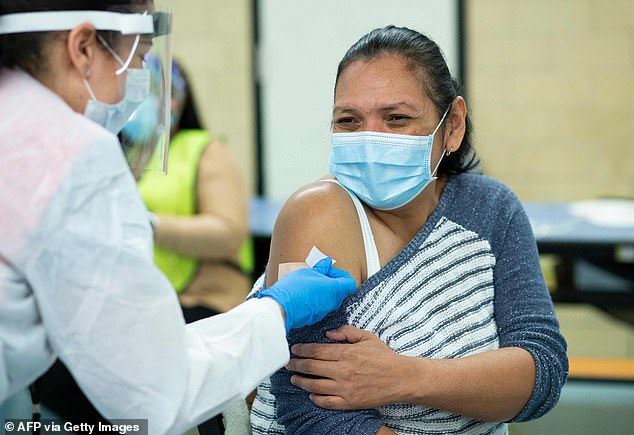PROFESSOR ROB GALLOWAY: Yes, I was wrong to dismiss Covid… but here’s why we shouldn’t panic over new illness in China
In recent weeks, frightening news has emerged from China: On November 23, the World Health Organization (WHO) issued a statement about an increase in respiratory complaints in several hospitals in the north of the country.
The statement was supported by alarming images of crowded hospitals full of children wearing oxygen masks receiving intravenous fluids, and details that Beijing Children's Hospital was receiving more than 9,000 new patients a day.
Reading these reports sent shivers down my spine. It was a repeat of similar stories in late December 2019, when news of what turned out to be Covid first hit.
I'll be honest: at the time, I initially dismissed those stories, thinking this was a contained outbreak involving a relatively small number of patients, accompanied by a significant dose of alarmist hype.
I quickly realized how wrong I was.
Children receive infusions at a children's hospital in Beijing on November 23, the same day the World Health Organization issued a statement on an increase in respiratory complaints in the country
So when I read the reports from China this time, knowing that I had been wrong in my previous initial pandemic predictions, I looked at the story with a much more critical eye to the details. The question is: should we be concerned in Britain?
The first details were published by the International Society for Infectious Diseases in their November 21 Promed (Programme for Monitoring Emerging Diseases) report, which showed clusters of new infections occurring in several locations in northern China.
The next day, WHO had a conference call with Chinese health authorities to determine what was happening. They in turn provided data that could explain what was going on and that there was no need to panic. This data showed that there had been a significant increase in the number of winter viruses circulating in the population since October.
These viruses include RSV (respiratory syncytial virus), adenovirus and influenza. These viruses mainly affect children because they have not previously been exposed to them, or those most vulnerable to infection, such as the elderly.
An increase in cases is to be expected every winter – but I believe this peak is so much greater because of the way China has managed its Covid response; severe lockdown and then the sudden opening of society.
This means that many children were not exposed to these viruses and immunity was not built up, leading to the sudden explosion in cases.
Something similar (but to a lesser extent) happened in the UK in early January this year, when children's wards and emergency departments (where I work) were full of children with respiratory infections. However, as predicted, the numbers fell as quickly as they rose dramatically. But this cannot explain the whole picture of what is happening in China.
The data showed that there was also an increase in infections with the bacterium Mycoplasma pneumoniae, which can cause a nasty pneumonia.
The number of children infected had increased since May; then there were more and more cases of co-infections – where the children got bacterial and viral infections at the same time – thanks to the increasing amounts of viruses circulating in the population (blame it on the winter weather and people spending more time indoors in the immediate environment) .
Although pneumonia caused by the bacteria is usually treated with a specific type of antibiotics called macrolides (e.g. clarithromycin and erythromycin), overuse of these drugs has caused the strain of bacteria that is dominant in Beijing to become antibiotic resistant. Over the past 15 years, 70 to 90 percent of Mycoplasma pneumoniae infections in Beijing were due to strains resistant to these antibiotics. But what's really important is that the cases in China were linked to a known cause – unlike Covid-19 initially, where we had no idea what the cause was.
This would also explain why it is the children who suffer the most this time: adults have been exposed to these infections before and so have built up immunity and do not get as sick.

A woman receives a dose of the Moderna coronavirus (COVID-19) vaccine at a vaccination site in New York in 2021
Another possible explanation for the rise in cases is that the population has a reduced ability to fight infections due to Covid. While most people's immune systems return to normal after a simple bout of Covid, those who have had a severe episode and/or endured a prolonged period of Covid-19 are at risk of developing an altered immune response. But again, severe Covid-19 is so rare in children that it cannot contribute to the rise in respiratory complaints in China.
And then there are those photos on TV of the children in China on the wards. They have oxygen and intravenous fluids – things we would only give to very sick patients, but they are looking good and doing homework.
This is not something I have seen in the hospitals I have worked at. Perhaps some of the numbers in hospitals are a reflection of different medical ways of caring for patients, rather than the start of a new pandemic. So I'm as sure as you can be that what we're seeing in China is a rise in common respiratory infections due to the sudden changes in lockdown rules.
I do not believe this is due to previous Covid infections, nor is it a new virus that is about to cause a global pandemic worse than Covid.
Again, I believe this is a relatively small number of patients, but in a contained outbreak it comes with a significant dose of hype.
My assessment is based on an interpretation of the data and science. However, I am aware that all thinking can be influenced by a phenomenon known as optimism bias: an unconscious bias that influences the way we think so that we come to the conclusion that we want it to happen. And I definitely don't want to experience another pandemic.
And of course my opinion is based on the facts we have now and on the caveat that the information we have is true.
As new information becomes available, my opinion will change as a result of the new evidence – just as it did when the scale of the Covid outbreak became clear.
But I'm not the only one who thinks this way about the recent outbreak in China: Benjamin Cowling, an epidemiologist at the University of Hong Kong and a leading expert on the transmission of infections, said in an interview after the data came out of China released that this 'is a typical winter peak' in acute respiratory infections.
“It is happening a little earlier this year, perhaps due to the increased susceptibility of the population to respiratory infections as a result of three years of Covid measures,” he said.

PROFESSOR ROB GALLOWAY: As new information becomes available, my opinion will change with the new evidence – just as it did when the scale of the Covid outbreak became clear
Meanwhile, Francois Balloux, a computational biologist at University College London, said: 'As China experienced a much longer and heavier lockdown than any other country on Earth, it was expected that those 'lockdown exit' waves there could be substantial.'
Zania Stamataki, one of the UK's leading experts in this field, works as an associate professor of viral immunology at the University of Birmingham. She told the BMJ on November 23: 'There is currently no evidence that the increase in cases of childhood pneumonia in China is due to a new virus.'
All reassuring words from world-renowned experts. So don't panic about what's happening in China.
But there is no doubt that we will one day face another pandemic and what I can predict with confidence is that the next pandemic time bomb is ticking.
The problem is that we don't know when this bomb will explode; it could be next year, but also in a hundred years.
All we can do is plan; Learn the lessons from Covid-19, invest in the systems needed to detect the onset of pandemics early and increase the resilience of the healthcare system so that it can better cope when the next pandemic actually hits.
@drrobgalloway
